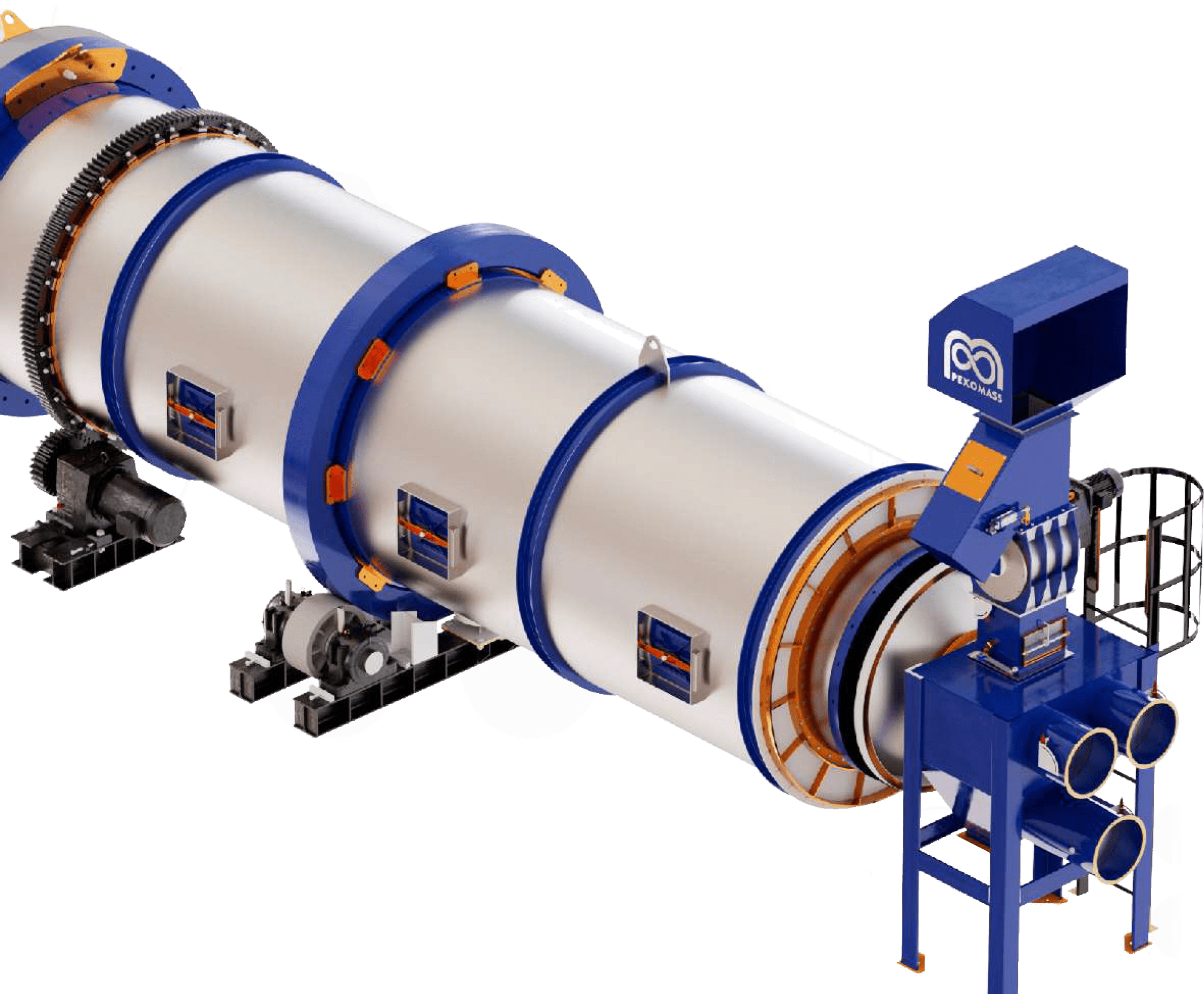Dryers

Dryers
An industrial dryer is a high powered complex device designed to remove moisture from machinery products, materials, food products, and mixtures. They are large rugged durable industrial pieces of equipment capable of drying high volumes of product efficiently with exceptional precision & control.
Drying can be defined as the vaporization of absorbed moisture from wet materials. It is a heat and mass transfer process that is completed using a variety of mechanisms. The basis of the process is the transfer of heat from the material to be dried, which causes the absorbed water to vaporize that is transferred to and carried by the surrounding air or inert gas.
During the drying process, the humidity or moisture content of the surrounding air increases. The weight of the dried material decreases while the moisture free weight is constant. Some of the purposes of drying are
- The prevent of the growth of bacteria, molds, and other microbes on food and pharmaceutical products
- To protect materials from rust and corrosion
- To improve and maintain the positive properties of a material
- To prepare materials for further processing, storage, handling, and transportation
- To enhance functionality, usability, and the value of a product
Dryers are used in food, pharmaceutical, agricultural, sugar, pulp and paper, textiles, wood, metallurgical, metal fabrication, and automotive industries.
Heat Transfer Categories of Dryers
Conductive heat transfer is a process where materials to be dried are heated through a board, object, or jacket. With convective heat transfer, the drying process is direct without the use of a board or coils. The two drying processes are classified as direct and indirect where conductive heating is indirect &convective heating is direct.
Batch or Continuous Mode Industrial Dryers
The term batch dryer is a general descriptor that covers several versions of high volume dryers capable of efficiently drying large numbers of parts in one single cycle. Batch dryers can have conveyor systems where parts pass through on webbed belts that allow heated air to flow around the parts through the webs in the dryer. Other forms of batch dryers have a drying chamber with brackets to hold baskets of parts. It is form of dryer that is manually operated but has a control system that monitors the drying chamber
Some forms of batch dryers have drying zones where parts pass through a series of heated areas to slowly and evenly dry parts. This type of dryer design is automated, which makes it possible for parts to be unloaded by robotic mechanisms, a characteristic that radically differentiates this form of batch dryer from other forms of drying processes
Batch dryers process a fixed volume of material at particular drying duration. A high volume, number, or quantity of materials passes through the drying chamber. The quantity is limited by the holding capacity of the dryer. The dried materials are unloaded automatically or manually to make room for the next batch. Batch dryers are used in relatively low production volumes. Typical forms of batch dryers are tray dryers, drum dryers, or rotary dryers
A continuous dryer is designed to continually dry a constant flow of products, which may be grains, completed parts, pharmaceuticals, or various forms of food products. As with other forms of dryers, continuous dryers take several forms and can include transport chains, carts, rotary pumps, and conveyor belts. The drying process includes the movement of materials through dryer chamber that has different zones that provide chemical and physical drying processes to hold baskets of parts. It is form of dryer that is manually operated but has a control system that monitors the drying chamber.
The first zone on a continuous dryer raises the temperature of the material to diffuse any moisture circulating around the product. As the product moves through other zones, the diffusion increases from the surfaces of products and into the air in the dryer. During the process, the temperature of each zone is carefully controlled to prevent damage to the product or material.
Continuous dryers are highly efficient and do not need to be cooled at the completion of a drying cycle. This is realized in production process savings since batches can be fed without having to change the controls of the dryer. Continuous dryers include gas burners, monitors for temperature and moisture, moisture outlets, recuperative burners, and a steering system with a control panel.
There are many benefits related to the use of continuous dryers that assist in the efficiency of a business. Continuous dryers have a very high throughput rate that makes it possible to process a high volume of material in a short time. The success of the process can be measured by the low moisture content of products at the end of the process, which makes it possible to immediately ship dried products.
Types of Continuous Dryers
Types of Batch Dryers
The difference between the various types of dryers is based on the mechanism used to remove moisture as well as the many different sizes & capacities. Small capacity industrial dryers are used for R&D and research laboratories, which remove a few grams of moisture. Large scale industrial dryers handle tons of wet feed per hour.
The many varieties of industrial dryers make choosing the right dryer with the appropriate type, size, & specifications for a given application a process that has to be carefully planned & considered. Each of the types of dryers offers capabilities & features that can affect the quality & performance of the final product.